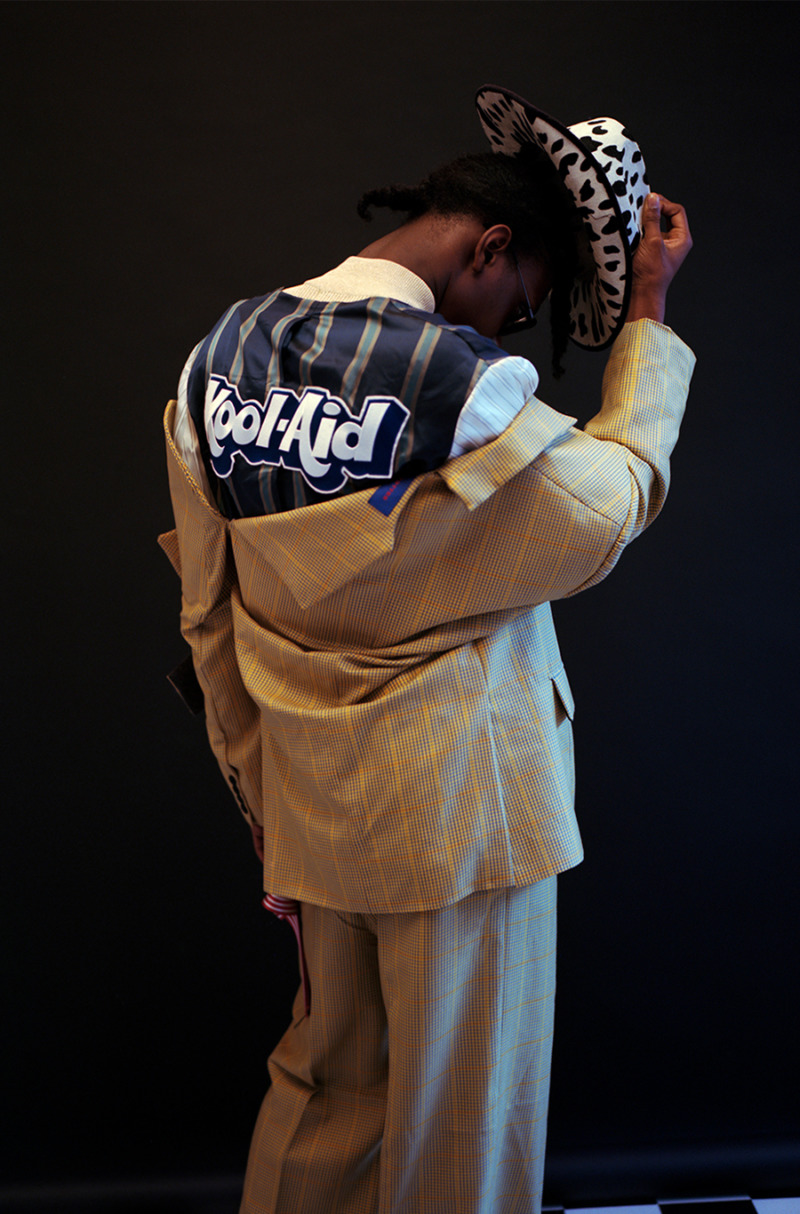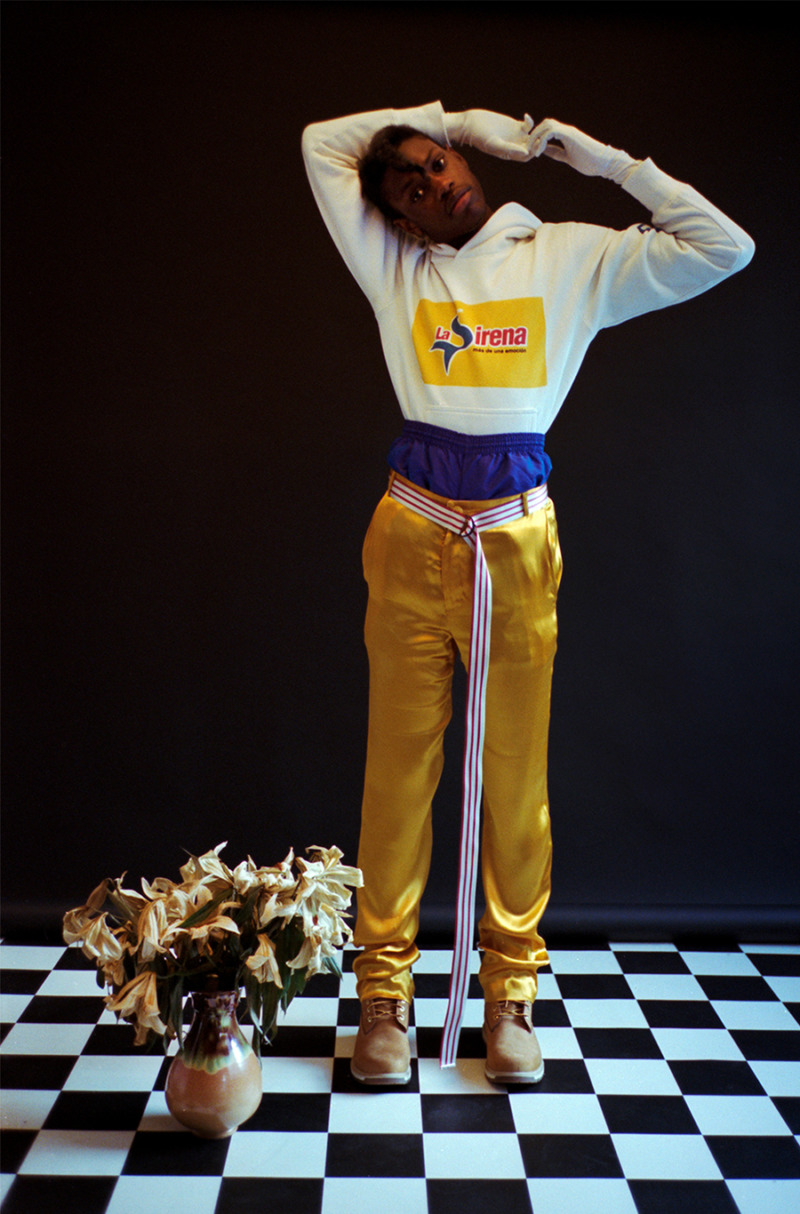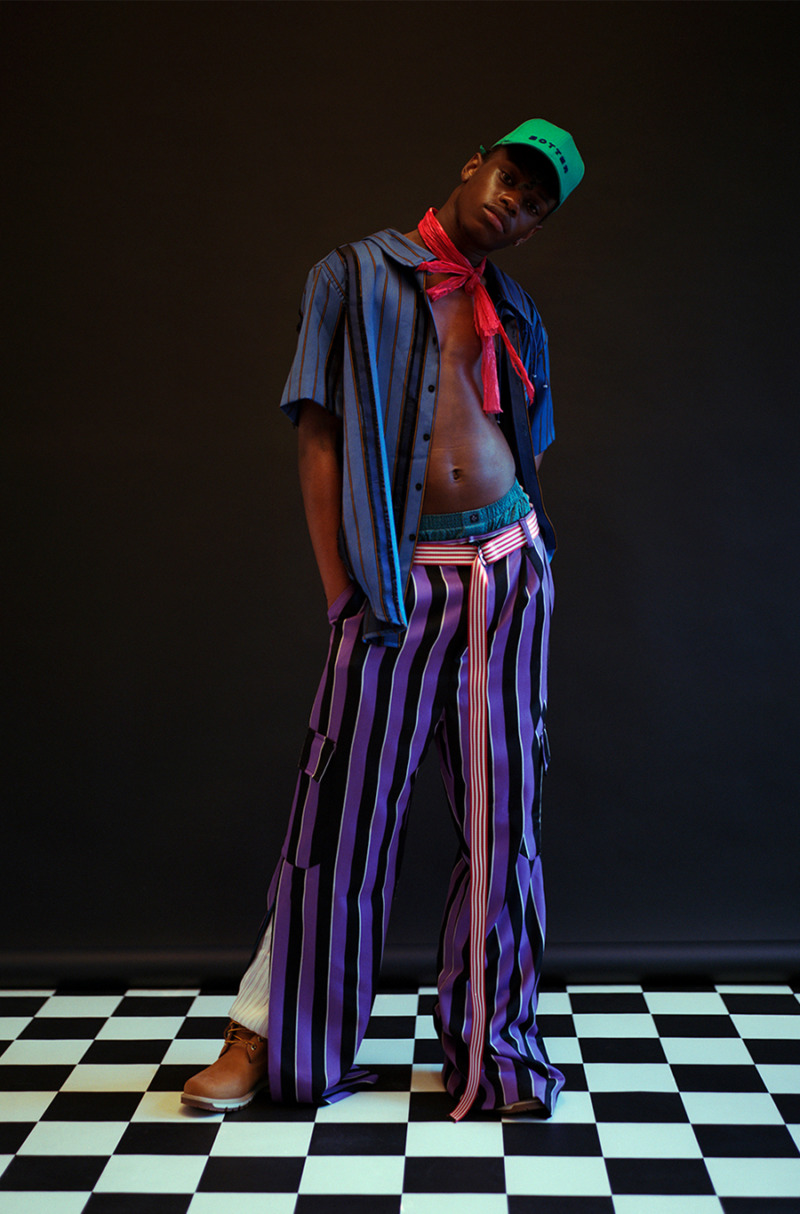Interview – BOTTER

Fish or Fight. This play on words is the observation Antwerp-based brand BOTTER suggest is the struggle for the new generation of Caribbean youth as they jump ship to Europe in search of a so-called ‘better’ life. It’s a matter of finding their feet and fighting in a foreign terrain – and subsequently losing aspects of their culture in the process – or continuing to hold up the family trade of fishing. It also, symbolically, makes for the name of the brand’s lauded SS18 collection (winner of the prestigious Première Vision Grand Prize at the Hyères International Festival of Fashion and Photography), which translates the atmosphere of the Caribbean and explores this transition of shifting and adopting tropes of cultures.
The reference to the region is intrinsic to the BOTTER DNA – it runs thick and fast through the blood of the duo (a power couple outside of the design studio), who work hand-in-hand to drive the brand. Rushemy, who designs the collections and captures the essence of the concept through colour, fabrics and prints, hails from Curaçao; Lisi, a very skilled pattern cutter, who handles the technicalities and knows exactly how to bring the drawings to life, descends from the Dominican Republic. It seems only fitting, then, with such rich heritages – Rushemy tells us “the Caribbean is a melting pot of diversity, history, art and innovation” – that the designers would mine inspiration aplenty.
“We certainly try to capture the elegancy of the culture,” Rushemy explains. But it goes deeper than inspiration, BOTTER want to use their platform for the greater good – and the references to their native land come rife with social commentary. “We were trying to create awareness for a few problems that the island people are facing at the moment,” Rushemy says, talking about the subverted ‘SHELL’ motifs which aim to bring attention to the disappearing coral reef, “I wanted to take advantage of the platform I had at that moment and tell everyone what they can’t.”
Antwerp is home to you both, but Rushemy, your families’ roots lie in Curaçao, and Lisi, yours are in the Dominican Republic – tell me how both places have informed the people you are today.
We are both very much family people, we were raised with a lot of family around us. Let’s say our homes were always crowded. It made us think in a different way; from a young age, we were aware of diverse cultures. This made us think outside the box, as we both dealt with multiple values and morals from both cultures.
How would you sum up the energy of the Dominican Republic, Antwerp, and Curaçao, and what makes each of these places so unique and special in their own right?
These three places have influenced our style over the years. The energy of all three places is very creative. Both in Curacao and the Dominican Republic, the outdoor life on the streets is very energetic, and when we are there we can’t stop watching the people and the beautiful landscapes. Colours look more beautiful; even garbage can look like a piece of art. People make the most of life there with not much; the most beautiful things can happen. It also makes you more grounded; we don’t need much to be happy, creative and to create. The energy in Antwerp is very different, this feels like a small village but it’s filled with creative people from all kind of disciplines.
In terms of your designs, SS18 arrived as an ode to both your Caribbean heritage. Rushemy, you’ve said before that you can always spot a person from the Caribbean in Europe through their sense of style; what aspects set them apart and how did you explore and present this in the collection?
The colourful way of dressing, the way they feel they need to match every colour and bring it back in a different piece of clothing. The way they care about themselves in a way the European man doesn’t often do; their faces look slick, so clean it’s almost feminine with plucked eyebrows, and sometimes you even see nail polish on. In the Caribbean, it’s normal when men care for their looks and they fix their eyebrows or their hands. It’s normal for a man to go to the salon and look slick. I am not sure why this is; maybe it all starts with their upbringing because boys often grow up without a father figure and are brought up by a woman alone.
For this collection, it was very important to me to communicate the Caribbean atmosphere. This all started with the concept and it translated into the garments with the use of colour, silhouette, print and styling. We translate this by following and expressing our feelings, we understand this way of dressing because we were raised with it. We look around us, to our family and how idle men are, to a point it’s almost feminine. We certainly try to capture the elegance of the culture.
With subverted ‘SHELL’ logos, inflatable sea animals and toy guns, the collection arrived with what can only be interpreted as social commentary. Can you break down the messages and issues you hoped to bring light to, and why you chose to give the collection this narrative?
We were trying to create awareness of a few problems that the island people are facing at the moment. One of those is as you mentioned the (S)Hell logo, which is a big middle finger to big corporations that contribute to the plastic in the ocean. The coral reef is extremely damaged and will possibly never grow back again. The coral reef is so important to the health of the ocean and the island people really feel this change, as it becomes more difficult to catch fish and provide for themselves. I wanted to take advantage of the platform I have and tell everyone what they can’t.

Where did the concept come from for the BOTTER X NIKE ® – Vapormax/Banker Shoe and how does this nod to the Caribbean?
The idea came to life because I wanted to capture the struggle the Caribbean youth go through as they move to Europe for a better life and opportunity to study. It’s a symbol for stepping on the old culture and wanting better. Choosing the way of what they think is a better life, often leads them to lose aspects of their culture.
When we talk about culture, some think of our heritage, others question the way they live or even where they live. Culture is, however, greater than that, it is more an expression of who they are and they can lose sight of that. The Caribbean culture has always been a “shock” to many. Even amongst themselves, they become victims of culture shock when they travel abroad and end up feeling lost.
It would be interesting to hear what your friends and family in the Dominican Republic make about your designs; what are some of their favourite looks?
Everyone who saw it immediately recognised themselves or others around them. They felt proud of the people who are living in their beautiful country and their beautiful culture. They are sometimes shocked by how we captured the ‘everyday stuff’ and made it something special. But we think we can look at their world differently from the outside. A popular favourite look is the hand painted flower suit.
I know you have plans to present a BOTTER collection in the Dominican Republic. How significant would this be, and what other plans to bring your designs back to your heritage do you have?
Our dream would be to start a Fashion Week in Curaçao as there is none yet, but there is so much talent and we would love for them to have a chance. It would be a dream to give back to the youth; combining fashion with art to educate them as this is lacking very much in Curaçao. We take so much inspiration, this would be the least we can do. But this is a long-term plan.
There are some events where shops can show what they are selling, but a serious fashion designer would travel abroad to show his or her garments. I know there are some developments and serious aspirations of changing this as there is so much talent here. The Caribbean is a melting pot of diversity, history, art and innovation.
What does being able to represent Curaçao and the Dominican Republic through BOTTER mean to you both?
This means so much to us, it feels like giving back the love we have received from the country for so many years. We are also very proud to be able to do this and we will continue to do so!

Photographer: Ed Phillips
Stylist: Shirley Amartey
Stylist Assistant: Aayushi Vasant
Grooming: Emma Small
Hair: Afi Emily Attipoe
Model: Abolaji @Anti-Agency
